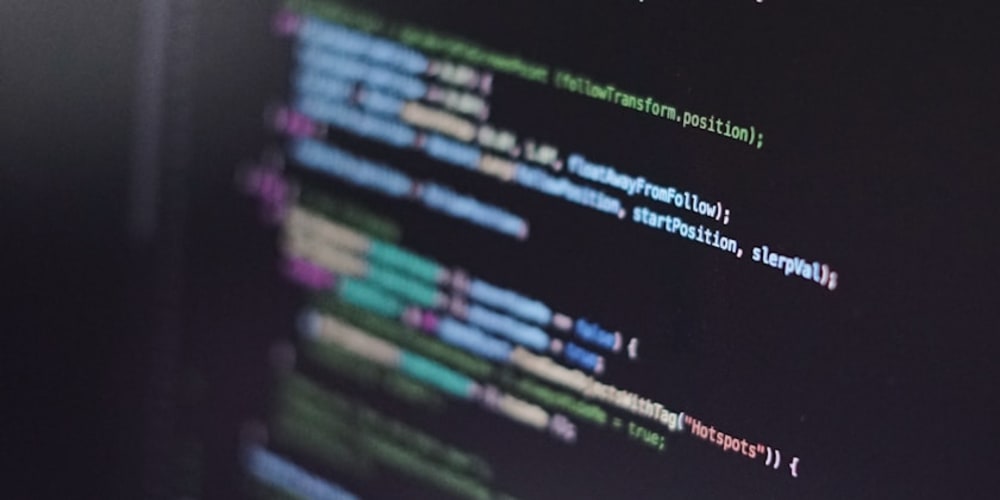Every Cyber Attack: A Comprehensive Guide to Prevention
Introduction
The digital landscape is a battleground. Every day, hackers and cybercriminals wage war against businesses, governments, and individuals alike. From data breaches to ransomware attacks, the threat is ever-present and evolving at an alarming rate. This comprehensive guide aims to demystify the world of cyber attacks, providing a thorough understanding of their types, methods, and most importantly, how to effectively prevent them.
The Relevance: Cyberattacks are no longer a niche concern. They affect everyone, from multinational corporations to small businesses and individuals. The rise of interconnected devices, cloud computing, and social media has created a vast attack surface, making it easier than ever for attackers to exploit vulnerabilities. The financial and reputational damage caused by cyberattacks is staggering, with companies and individuals losing billions of dollars annually.
Historical Context: The history of cybercrime is intertwined with the evolution of technology itself. Early examples include the Creeper virus in 1971, the Morris worm in 1988, and the Love Bug in 2000. As technology advanced, so did the sophistication and scale of cyberattacks. The advent of the internet and the rise of social media further amplified the threat.
The Problem: Cyberattacks threaten the security, privacy, and integrity of our digital world. They disrupt businesses, steal sensitive data, and can even put lives at risk. The lack of awareness and inadequate security measures among individuals and organizations further exacerbate this problem.
The Opportunity: While cyberattacks pose a significant threat, they also present an opportunity. By understanding the methods, motives, and vulnerabilities of attackers, we can develop proactive measures to protect our digital assets and build a safer online environment.
2. Key Concepts, Techniques, and Tools
This section dives into the foundational concepts, terminology, and tools that are essential to understanding cyber attacks and their prevention:
2.1. Cyber Attack Classifications:
Cyberattacks can be categorized based on their objectives, targets, and methods. Here are some common types:
- Malware: This includes viruses, worms, trojans, spyware, and ransomware. Malware infiltrates systems to steal data, disrupt operations, or hold data hostage for ransom.
- Phishing: This involves tricking users into divulging sensitive information through deceptive emails, websites, or messages. Phishing attacks often target credentials, financial information, or personal data.
- Denial-of-Service (DoS) Attacks: These aim to overload a system or network, making it unavailable to legitimate users. DoS attacks are often used to disrupt online services or target specific websites.
- SQL Injection: This type of attack targets vulnerabilities in web applications, allowing attackers to gain unauthorized access to sensitive data.
- Zero-Day Exploits: These exploit vulnerabilities in software that are unknown to developers, allowing attackers to gain immediate access before patches are available.
- Man-in-the-Middle (MitM) Attacks: These involve intercepting communication between two parties, allowing the attacker to eavesdrop on or manipulate data.
- Social Engineering: This relies on manipulating people to gain access to systems or sensitive information. Techniques include impersonation, pretexting, and baiting.
- Insider Threats: These attacks are perpetrated by individuals with authorized access to sensitive systems and data. They can be motivated by malice, negligence, or personal gain.
2.2. Common Attack Vectors:
Attack vectors refer to the pathways used by attackers to gain access to target systems:
- Email: Phishing emails are a common entry point for malware and credential theft.
- Websites: Malicious websites can host malware or exploit vulnerabilities in web browsers.
- Social Media: Social engineering attacks often leverage social media platforms to gain trust and access to information.
- Mobile Devices: Smartphones and tablets can be vulnerable to malware, phishing, and other attacks.
- Internet of Things (IoT): Connected devices like smart home appliances and wearable devices can be exploited by attackers.
2.3. Security Tools and Frameworks:
- Antivirus Software: Detects and removes malware from systems.
- Firewalls: Block unauthorized access to networks.
- Intrusion Detection Systems (IDS): Monitor network traffic for suspicious activity.
- Intrusion Prevention Systems (IPS): Block malicious traffic before it reaches systems.
- Endpoint Security Software: Protects individual devices from malware and other threats.
- Security Information and Event Management (SIEM): Collects and analyzes security data to identify threats.
- Vulnerability Scanners: Identify weaknesses in systems and applications.
- Penetration Testing: Simulates real-world attacks to identify vulnerabilities.
2.4. Industry Standards and Best Practices:
- NIST Cybersecurity Framework: Provides a framework for managing cybersecurity risk.
- ISO 27001: An international standard for information security management.
- PCI DSS: A standard for protecting credit card data.
- HIPAA: A US law governing the protection of health information.
- GDPR: A European law governing the protection of personal data.
3. Practical Use Cases and Benefits
3.1. Real-World Use Cases:
- Business: Cyberattacks can disrupt operations, steal intellectual property, and damage reputations. Effective cybersecurity measures are crucial for protecting sensitive data and maintaining business continuity.
- Government: Government agencies are prime targets for cyberattacks, which can compromise national security, disrupt critical infrastructure, and damage public trust.
- Healthcare: Hospitals and other healthcare providers are vulnerable to cyberattacks that can compromise patient data, disrupt medical services, and put lives at risk.
- Finance: Financial institutions are targeted for cyberattacks aimed at stealing financial data, disrupting transactions, and causing financial losses.
- Individuals: Individuals are increasingly vulnerable to cyberattacks, which can lead to identity theft, financial fraud, and privacy violations.
3.2. Benefits of Cybersecurity:
- Data Protection: Protects sensitive data from unauthorized access, use, disclosure, disruption, modification, or destruction.
- Business Continuity: Ensures that businesses can continue operating in the face of cyberattacks.
- Financial Security: Safeguards financial assets from theft and fraud.
- Reputation Management: Protects the reputation of organizations and individuals from damage caused by cyberattacks.
- Legal Compliance: Ensures compliance with relevant laws and regulations governing data protection and security.
4. Step-by-Step Guides, Tutorials, and Examples
This section provides practical guidance on how to prevent common cyber attacks:
4.1. Secure Your Password:
- Use Strong Passwords: Create passwords that are at least 12 characters long and include a mix of uppercase and lowercase letters, numbers, and symbols.
- Avoid Common Passwords: Do not use easily guessable passwords like "password" or "123456."
- Use Different Passwords: Use unique passwords for different accounts.
- Enable Two-Factor Authentication: Adds an extra layer of security by requiring a second verification factor (like a code sent to your phone) in addition to your password.
4.2. Protect Your Devices:
- Install Antivirus Software: A good antivirus program can detect and remove malware from your devices.
- Keep Your Software Updated: Software updates often include security patches that fix vulnerabilities.
- Be Cautious of Email Attachments: Do not open email attachments from unknown senders or click on links in suspicious emails.
- Use a Firewall: A firewall can block unauthorized access to your network.
- Install Security Patches: Regularly install updates and patches for your operating system, web browser, and other software.
4.3. Be Aware of Phishing Attacks:
- Hover Over Links: Before clicking on a link in an email, hover over it to see the actual URL.
- Check the Sender's Address: Verify that the email address of the sender is legitimate.
- Be Wary of Urgent Requests: Be suspicious of emails demanding immediate action or threatening consequences.
- Report Suspicious Emails: If you receive a suspicious email, report it to your IT department or the relevant authorities.
4.4. Secure Your Network:
- Use a Strong Password for Your Router: Change the default password for your router and choose a strong, unique password.
- Enable WPA2 or WPA3 Encryption: This secures your wireless network and prevents unauthorized access.
- Disable WPS: WPS (Wi-Fi Protected Setup) can be vulnerable to attacks.
- Use a VPN: A virtual private network (VPN) encrypts your internet traffic, making it more difficult for attackers to intercept.
- Consider a Network Security Scanner: Regularly scan your network for vulnerabilities.
4.5. Train Your Users:
- Implement Security Awareness Training: Educate users about cybersecurity threats and best practices.
- Conduct Regular Security Drills: Simulate attacks to test users' responses and identify weaknesses.
- Promote a Culture of Security: Encourage employees to report suspicious activity and take security seriously.
4.6. Secure Your Website:
- Use HTTPS: Ensure that your website uses HTTPS to encrypt communication between your server and users.
- Implement Strong Password Policies: Enforce strong passwords for website administrators.
- Use a Web Application Firewall (WAF): A WAF can protect your website from attacks such as SQL injection and cross-site scripting (XSS).
- Perform Regular Security Audits: Regularly scan your website for vulnerabilities and security weaknesses.
5. Challenges and Limitations
Despite advancements in cybersecurity, challenges and limitations remain:
- Constant Evolution of Threats: Hackers are constantly developing new attack methods and exploiting vulnerabilities.
- Complexity of Systems: The increasing complexity of modern IT systems makes it difficult to secure them fully.
- Human Error: Human error is a major source of security vulnerabilities.
- Lack of Awareness: Many individuals and organizations are unaware of the threat or do not prioritize cybersecurity.
- Resource Constraints: Some organizations lack the budget, resources, or expertise to implement adequate security measures.
5.1. Mitigating Challenges:
- Stay Informed: Keep up to date on the latest cybersecurity threats and vulnerabilities.
- Invest in Security Tools: Invest in reliable security tools and software.
- Train Users: Train users on cybersecurity best practices and awareness.
- Develop a Security Strategy: Create a comprehensive security plan that addresses the specific needs of your organization.
- Partner with Security Experts: Seek help from security professionals to assess your vulnerabilities and implement effective security measures.
6. Comparison with Alternatives
- Traditional Security Measures: Traditional security measures such as firewalls and antivirus software are still essential, but they are not always sufficient to protect against sophisticated attacks.
- Cloud-Based Security Solutions: Cloud-based security solutions offer scalability, flexibility, and cost-effectiveness, but they may require careful consideration of data security and compliance.
- Artificial Intelligence (AI) and Machine Learning (ML): AI and ML are being used to detect and prevent cyberattacks, but they still have limitations and require careful implementation.
7. Conclusion
Cybersecurity is a dynamic and evolving field. The threat of cyberattacks is ever-present and will continue to evolve as technology advances. By understanding the key concepts, techniques, and tools, implementing best practices, and staying informed about the latest threats, we can significantly mitigate the risk of cyberattacks and protect our digital assets.
Key Takeaways:
- Cyberattacks are a growing threat, impacting individuals, businesses, and governments.
- Understanding the different types of attacks, attack vectors, and security tools is essential.
- Implementing strong passwords, securing devices, being aware of phishing attacks, and securing networks are crucial for protection.
- Regularly updating software, using antivirus software, and training users are essential for staying ahead of threats.
Further Learning:
- Online cybersecurity courses and certifications
- Industry events and conferences
- Cybersecurity blogs and websites
The Future of Cybersecurity:
The future of cybersecurity will likely involve a greater reliance on AI and ML to automate threat detection and response. New technologies such as blockchain and quantum computing will also play a significant role in shaping the cybersecurity landscape. However, the human element will remain critical, and ongoing education, awareness, and training will be essential to building a safer digital world.
8. Call to Action
Don't wait for a cyberattack to happen. Take proactive steps to protect yourself and your organization. Implement the security measures discussed in this guide, stay informed about the latest threats, and train your users. Remember, a secure digital world is a shared responsibility.
Next Steps:
- Choose a strong password for your online accounts.
- Install antivirus software on your devices.
- Update your software regularly.
- Be cautious of suspicious emails and websites.
- Secure your wireless network.
Let's work together to build a safer and more secure digital future.


















